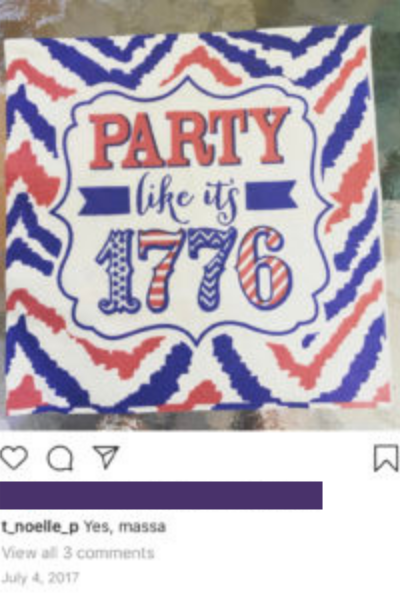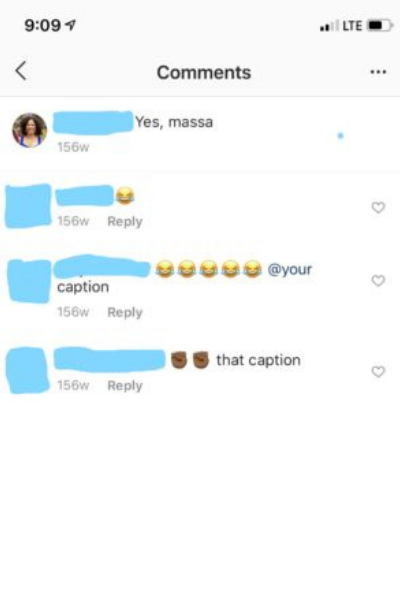“I already won the lottery. I was born in the U-S of A baby.” – Creed Bratton
This quote from The Office is one of my favorites and I post it every year on the 4th of July. It’s funny and I love this country.
Now, just because I believe America is the best, doesn’t mean I don’t think there is room for improvement.
I also love to make posts like this:


A lot of us brown folks like to make jokes like this. I don’t know. It could be a defense mechanism.
In reality, it’s to remind people that on July 4, 1776, MOST people weren’t free.
Most Black people were enslaved and Native Americans were being systematically wiped off the continent. (You could even throw women into the category of the un-free).
This doesn’t mean I hate America.
I’m so tired of the “if you don’t like it, leave” trope. Come on, your privilege is showing.
I won’t get into all the ways that that way of thinking is stupid. That’s for a different post. But, I do believe you can love your country and still want to improve it. Over the past year, we’ve seen a lot of this. With the fight for anti-racism, police reform, reproductive & LGBT rights.
And now, we are seeing the Right coming for Critical Race Theory. Something they clearly don’t understand. To me, it’s a tactic to rally their base for the 2022 midterm elections. One of the scariest goals of this CRT backlash is the white-washing of history.
That said, I want to talk about a speech I was first introduced to in college: “What To The Slave Is The 4th Of July?” by Frederick Douglass.
Now before you come for me with the “how dare you disrespect the 4th of July” or “Black people now have Juneteenth. They shouldn’t be celebrating the 4th of July.” (Yup, people have actually said this). I want to share some ways you can teach this speech in your social studies classes. We can draw some parallels to things that are going on today. Plus, this speech is dope.
Ok, so what’s this speech?
Well, since I read it over 15 years ago, I read a 15-page abridged version of it. Yup, you read that right. 15 pages. ABRIDGED.
My first thought was, “damn, people must have had much longer attention spans than we do today. This speech is long af.”
My second thought was, “How many people actually understood what Douglass was saying?” This speech was more eloquent and intellectual than anything I’ve heard recently. (No, I’m not bashing Trump. I’m also referring to other presidents).
Here’s the short of it:
Douglass gave this speech on July 5, 1852, to the Rochester Ladies’ Anti-Slavery Society. Nine years before the Civil War.
(I mention who he said the speech to because it’s important to teach students about “audience”. How would Douglass have written the speech differently if the audience was different?).
The speech covers the American Revolution, slavery in America, the Constitution, and religion. Douglass rails against American hypocrisy but is still hopeful that change will happen.
He asks: “What to the slave is the 4th of July?”
His answer: “a day that reveals to him, more than all other days in the year, the gross injustice and cruelty to which he is the constant victim.”
Boom.
Talk about a quote that can be linked to conversations our country has today.
So, since you can read, I’m not going to summarize the speech in its entirety. Here’s a version you can check out. It’s broken up into chunks and each paragraph is numbered, so it’s a little easier to read.
I have never taught this speech before. My excuse is that American slavery has never been in my curriculum. But as I did the research for this post, I realized that that’s total bs. There are several ways I can use this in my U.S. History or even Civics classes. And so can you.
Here are some of my ideas:
1. Speech Comparison
During my Civil Rights Movement unit, I have the students do a speech analysis activity. They compare and contract MLK’s “I Have A Dream” to an excerpt from Malcolm X’s “Message to the Grassroots.”
(Haven’t heard “Message to the Grassroots”? Check it out here).
Why not start with “What To The Slave Is The 4th Of July?”? You’ll need to read through it first and pick some excerpts. But it would be an interesting way to track civil rights issues over time.
2. Pre-Text Book Cover Activity
This a strategy that I’ve used to introduce the Declaration of Independence. You could totally adapt it to “What To The Slave Is The 4th Of July?”. Read the excerpt (keep it short) from the speech 2-3 times to the students. While you’re reading, have the students draw a book cover. They will draw whatever comes to mind while they are listening.
3. Blackout Poetry
I’ve also done this activity for the Declaration of Independence. It’s a cool way to assess the students’ understanding of the text. What you do is give the students an excerpt from the speech. Then the students will draw on and/or blackout parts of the speech. You can have the students focus on the following:
- theme
- word-choice
- tone
- mood
- etc
For more on how to use blackout poetry in your class click here.
4. Contextualization Activity
I love me some contextualization. My favorite way to teach contextualization is this strategy from the Teaching Channel. I use this strategy a lot. It’s engaging and helps me break down challenging readings and concepts, so the kids get it.
5. Chunking
If you’re strapped for ideas, you could just do some standard chunking. You know, have the kids read a paragraph or two, answer a question, and so on. This would be good as independent work after you introduce the speech. Then you could do a fun activity after the students have read the speech. I would do this after the Book Cover and before the Blackout Poetry.
Here are some ideas I found on the internet:
Note: A lot of the available lesson plans aren’t my bag. They are either text + questions heavy, or they are meant for honors and AP students. I believe that all kids should have access to speeches like this. It’s up to us as teachers to make them accessible to all our students.
1. Edsitement
This lesson is pretty basic, it’s reading and answering questions. But the questions are pretty good, and you can change them to suit your class.
2. America in Class
This lesson is also a reading-then-answer-the-questions type of lesson. But, it does have the answers to the questions, so that’s a nice little time-saver for teachers.
3. New York Times
Ok, so I think this lesson from the NYT is pretty fly. I’d try it out. It’s a Text-to-Text lesson that compares Kaepernick’s National Anthem Protest to “What To The Slave Is The 4th Of July?”. It even comes with worksheets!
4. Analyzing Ethos, Pathos, Logos
This is often used in English class, but it can also be used in social studies classes. I especially like to discuss Ethos, Pathos, Logos when comparing speeches. Here’s a lesson I found about using Ethos, Pathos, Logos for “What To The July Is The 4th Of July?”.
For your reference:
- Ethos: ethical appeal
- Pathos: emotional appeal
- Logos: appeal to logic
5. Other Resources
- Learning for Justice
- Books That Grow
- Carlisle Indian School Digital Resource Center
- Weber Reads Frederick Douglass and Harriet Jacobs Lesson Plan
Last thoughts & Tips
- Like I said before, this speech is tough. You’re going to have to differentiate for your students. I recommend taking some time to choose the excerpts you are going to use. Then level them for the students in your class. I usually do three versions. (I know this is a lot of work, but it’s kinda your job ;-)).
- Use word banks! There’s a ton of hard vocab in the speech. Even I had to look up a bunch of words.
- Put some related images in the reading to help the students get a better picture of what’s going on.
- Note: Word banks and images are great for EL students.
Your turn! Have you ever used “What To The Slave Is The 4th Of July?” in your classes? If so, how? If not, how will you use it in the future? Tell me in the comments below!
Want to read more from the Teach Hungry Movement? Click here to check out other posts!
comments +